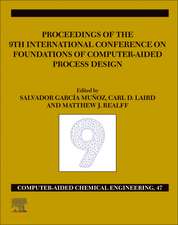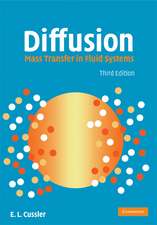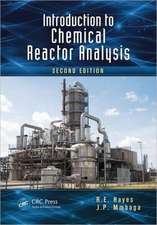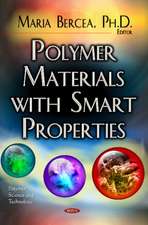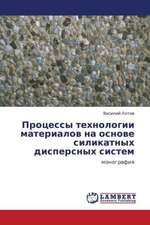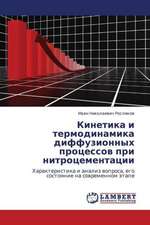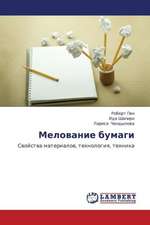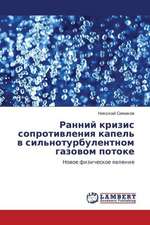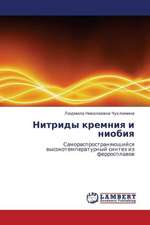Diffusion and Mass Transfer
Autor James S. Vrentas, Christine M. Vrentasen Limba Engleză Hardback – 12 dec 2012
The book first covers the five elements necessary to formulate and solve mass transfer problems, that is, conservation laws and field equations, boundary conditions, constitutive equations, parameters in constitutive equations, and mathematical methods that can be used to solve the partial differential equations commonly encountered in mass transfer problems. Jump balances, Green’s function solution methods, and the free-volume theory for the prediction of self-diffusion coefficients for polymer–solvent systems are among the topics covered. The authors then use those elements to analyze a wide variety of mass transfer problems, including bubble dissolution, polymer sorption and desorption, dispersion, impurity migration in plastic containers, and utilization of polymers in drug delivery. The text offers detailed solutions, along with some theoretical aspects, for numerous processes including viscoelastic diffusion, moving boundary problems, diffusion and reaction, membrane transport, wave behavior, sedimentation, drying of polymer films, and chromatography.
Presenting diffusion and mass transfer from both engineering and fundamental science perspectives, this book can be used as a text for a graduate-level course as well as a reference text for research in diffusion and mass transfer. The book includes mass transfer effects in polymers, which are very important in many industrial processes. The attention given to the proper setup of numerous problems along with the explanations and use of mathematical solution methods will help readers in properly analyzing mass transfer problems.
Preț: 1079.20 lei
Preț vechi: 1316.10 lei
-18% Nou
Puncte Express: 1619
Preț estimativ în valută:
206.53€ • 224.26$ • 173.48£
206.53€ • 224.26$ • 173.48£
Carte tipărită la comandă
Livrare economică 22 aprilie-06 mai
Preluare comenzi: 021 569.72.76
Specificații
ISBN-13: 9781466515680
ISBN-10: 1466515686
Pagini: 644
Ilustrații: 100 b/w images, 29 tables and Approx 3629 equations.
Dimensiuni: 178 x 254 x 36 mm
Greutate: 1.16 kg
Ediția:1
Editura: CRC Press
Colecția CRC Press
ISBN-10: 1466515686
Pagini: 644
Ilustrații: 100 b/w images, 29 tables and Approx 3629 equations.
Dimensiuni: 178 x 254 x 36 mm
Greutate: 1.16 kg
Ediția:1
Editura: CRC Press
Colecția CRC Press
Public țintă
Universities and colleges with graduate programs in engineering, polymer science, engineering science, and industrial and government research laboratories.Cuprins
Introduction. Conservation Laws and Field Equations. Boundary Conditions. Constitutive Equations. Parameters in Constitutive Equations. Special Behaviors of Polymer–Penetrant Systems. Mathematical Apparatus. Solution Strategy for Mass Transfer Problems. Solutions of a General Set of Mass Transfer Problems. Perturbation Solutions of Mass Transfer Moving Boundary Problems. Diffusion and Reaction. Transport in Nonporous Membranes. Analysis of Sorption and Desorption. Dispersion and Chromatography. Effects of Pressure Gradients on Diffusion: Wave Behavior and Sedimentation. Viscoelastic Diffusion. Transport with Moving Reference Frames. Appendix: Vector and Tensor Notation.
Notă biografică
James S. Vrentas received his B.S. degree in chemical engineering from the University of Illinois and his M.Ch.E. and Ph.D. degrees in chemical engineering from the University of Delaware. As the Dow Professor of Chemical Engineering at the Pennsylvania State University, he teaches and conducts research in the fundamental aspects of diffusion and fluid mechanics. He is the recipient of two national AIChE awards, the William H. Walker Award for Excellence in Contributions to the Chemical Engineering Literature and the Charles M. A. Stine Award for Materials Engineering and Science. At Penn State, he has received the College of Engineering’s Premier Research Award and several teaching awards.
Christine M. Vrentas received her B.S. degree in chemical engineering from the Illinois Institute of Technology and her M.S. and Ph.D. degrees in chemical engineering from Northwestern University where she studied the dynamic and transient properties of polymer solutions. She has served as an instructor at the Pennsylvania State University and is currently an adjunct professor in the chemical engineering department working in the areas of diffusion and fluid mechanics. As a public school volunteer and supporter of science education, she helped coach State College Area Middle and High School Science Olympiad teams to national gold medals and served as a regional and state event supervisor at Science Olympiad competitions.
Christine M. Vrentas received her B.S. degree in chemical engineering from the Illinois Institute of Technology and her M.S. and Ph.D. degrees in chemical engineering from Northwestern University where she studied the dynamic and transient properties of polymer solutions. She has served as an instructor at the Pennsylvania State University and is currently an adjunct professor in the chemical engineering department working in the areas of diffusion and fluid mechanics. As a public school volunteer and supporter of science education, she helped coach State College Area Middle and High School Science Olympiad teams to national gold medals and served as a regional and state event supervisor at Science Olympiad competitions.
Recenzii
"Finally a text which integrates in an easily understandable and logical fashion the coupled nature of the equations of change with respect to multicomponent mass transfer and its constitutive equations."
—William H. Velander, University of Nebraska, Lincoln
"The book begins with a description of conservation laws, boundary conditions and constitutive equations…presents a mathematical treatment not covered in other similar books. This is a modern approach to transport phenomena. The unique feature of the book is the treatment of several topics, such as sorption, chromatography, and viscoelastic diffusion."
—Darsh T. Wasan, Dimitri Gidaspow, Illinois Institute of Technology
—William H. Velander, University of Nebraska, Lincoln
"The book begins with a description of conservation laws, boundary conditions and constitutive equations…presents a mathematical treatment not covered in other similar books. This is a modern approach to transport phenomena. The unique feature of the book is the treatment of several topics, such as sorption, chromatography, and viscoelastic diffusion."
—Darsh T. Wasan, Dimitri Gidaspow, Illinois Institute of Technology
Descriere
Presenting diffusion and mass transfer from both engineering and fundamental science perspectives, this book offers a comprehensive summary of the theory and applies that theory to obtain detailed solutions to a wide variety of problems. It covers conservation laws and field equations, boundary conditions, constitutive equations, parameters in constitutive equations, and mathematical solution methods including Green’s functions. The authors pay particular attention to polymer mass transfer, and they also discuss the free-volume theory for prediction of self-diffusion coefficients. Problems analyzed include bubble dissolution, impurity migration in plastic containers, and drug delivery using polymers.


